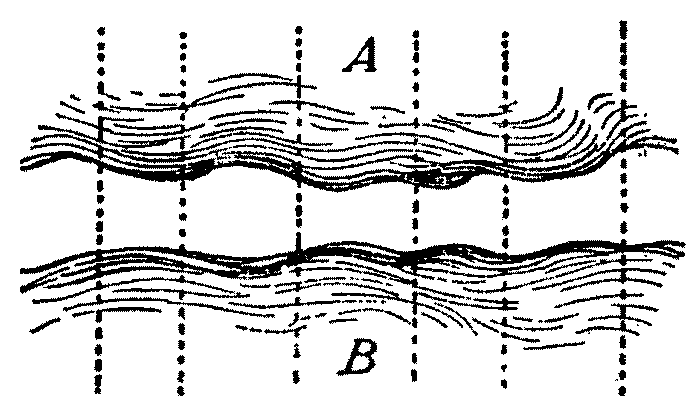PROPOSITION: That the problem with schooling is not that it evaluates learning. The problem is that it records this evaluation for all to check as the School, with full State sanction, grants degrees “with all the privileges thereto attached.”
In his Learning lessons (1979), Mehan made several foundational contributions to the anthropology of schooling. The book did not just summarize a historical state —as earlier ethnographies had done when they, for example, brought out class stratification in small town high schools (Hollingshead 1949). Mehan noticed something that appeared to typify schooling. He noticed this in “classrooms” and particularly in moments in called “learning lessons.” He dared model this feature and, in so doing, he offered a way to understand the ongoing constitution of what, at about the same time, Foucault characterized as an “epoch.”
As many have noticed, Foucault ([1975] 1978) did not specify in any detail what would be the mechanisms that maintain and develop those features that characterize the epoch, recursively, over decades if not centuries, catching in its web a larger and larger fraction of the world population. Foucault hypothesized that the people of our epoch lived in a “panopticon” and internalized the fear of wardens, even when wardens were not visible.
Mehan did not just hypothesized and interpreted. As a good ethnographer, he went where and when inmates (students) and wardens (teachers) actually meet in that school setting that looks most like a panopticon, that the classroom where students cannot ever quite escape the gaze of their teachers. As Mehan looked, he found something worth pondering: the continual asking of questions by the teacher, questions to which the teacher actually knew the answer. The questions were oriented towards something else than a request for information. They were intended to check whether the student knew the answer. This could be modeled as a ‘Q’uestion/’A’nswer/’E’valuation sequence. The “third” step in this sequence establishes the sequence as a particular kind of interactional, indeed political, sequence among many others (http://localhost/class/common/various/what_time.html). This “lesson” is the specific moment when people not only “learn” that which they did not know (the official account of the grand goals of schooling) but when they are also assessed, and eventually certified (through degrees and the like) as “knowing.”
In the book, Mehan also made a further essential distinction between “structure”—the state that is modeled— and “structuring”— the work of continually producing, or constituting that which can then be modeled as “the structure.” Outside of a small set of ethnomethodologists of education, it was not noticed that this emphasis on the work of structuring or establishing a particular order solved the question of “reproduction” without calling upon hypothetical entities such as a “habitus” that might be produced by a “panopticon.” Every time a teacher evaluates an answer as “good,” or a university president grants a degree “with all privileges thereto attached,” then schooling gets reconstituted as what it is to be for all involved (whether they accept it or not, or even if they are aware at any level of what is going on).
What Mehan did not quite do is explore systematically what happens next when local (classroom) QAE sequences are placed in the broader sequence when an overall ‘E’ (e.g. an end of term grade) is used as evidence for other purposes than checking a “knowing.” As McDermott insisted, a learning lesson is not just a moment constituting schooling-as-it-is, it is also a moment when all struggle against this schooling (for example in attempts to NOT get caught NOT knowing). In a classroom all are hard a work making it, hopefully, a good day, or life, in a well-ordered world. But all are also aware that the work might turn out to make a bad day, or a bad life. McDermott and I expanded this in our Successful failure (1998) as we focused on what happens after the structuring of the lesson when any evaluation is inscribed in the records of a student’s overall performance.
Apologists for public schooling continue to hope that well-designed examinations of prior learning can be occasions for a change in the social position of the student from “not knowing” to “knowing.” This is what is supposed to happen in the well organized “community of practice” as erstwhile peripheral participants move into fuller participation. But, unhappily, it can too often be documented that the examination leads to replacing the student in an earlier position as it appears to establish that “this student will never learn.” This can then justify all sorts of redirection (for example identifying the student as with some “disability” requiring “special education”). Again and again one can document that such overall evaluations often precede particular QAE sequences so that a “knowing” is not noticed, while a “not knowing” is dismissed as irrelevant (McDermott 1983; Varenne & McDermott 1998: Chapters 4 and 5).
Given all this ethnographic evidence, anthropologists of schooling must now going beyond adding to this evidence. Like Mehan did, they must also attempt a more formal analysis that will reveal the systemic (structural) features that produce this evidence—particularly given the efforts of so many (from teachers to policy makers to reformers) to establish something else. Re-thinking “discipline” as it is used by Foucault, might help us here. Discipline (and possibly punishment) is what constitute the consequences of local evaluations as some other thing than just confirming a learning. For example, establishing that a student knows how to read a clock is not the same thing as promoting (or demoting) the child into a new status. Consider the fate of an anthropologist noted for his critique of the Success/Failure aspect of schooling. Consider that, when challenged by a sympathetic reader, he had to acknowledge that he continues to give grades while, adding, as a kind of defense that NOT giving grades would be sanctioned (disciplined) both by his institution and by many of his students. Consider his analytic delight (?) when, several years later, he found out that his institution had been disciplined by the Federal Government of the United States of America for, precisely, being delinquent in recording grades leading the local “compliance officer” to threaten all faculty with disciplinary consequences if grades were not reported… Disciplining is ongoing work as wardens keep finding out that inmates are not quite doing what they should.
To simplify, “teaching” many be the task of “teachers” but disciplining is the task of others I will call, with a somewhat ironic bow to Foucault, “wardens.” In a school there are those who teach, and there are those who watch—from assistant principals to record keepers to the wonderfully named “compliance officers,” and many others, including other students, parents, “community members,” who may participate in telling a teacher “No!”. Garfinkel put all this in his usual pungent fashion when modeling the constitution of ‘service lines’ (for example in a post-office): “Consider also that once you get into line persons will not therein question that you have rightfully gotten into line unless you start screwing around. Then you get instructed.” (2002: 257). It is important that, for Garfinkel, the issue is not that the participants “know” how to line up but that, at every moment every participant is checking whether the lining up is done in a way that does not require explicit discipline (which is a form of discipline) or whether the need-to-be-disciplined behavior may actually not be disciplined for any number of justifications. In the cases that most interested Garfinkel “those-who-watch” may just be “everyday persons” with no particular authority except the one they give themselves to observe and discipline. In schools (and elsewhere) there also are people with specific authority to mete consequences (reward or punish) that may affect a whole life trajectory.
This disciplining could be modeled as:
‘W’atcher (warden) -> ‘B’ehavior by the watched -> ‘D’iscipline as meted by watcher of someone else with authority.
In the world of schooling, this model can be used to understand not only what happens in a classroom, but also, what happens in the relationship between teachers (as disciplined) and administrators who are tasked to tell teachers “No!” And as administrators know well, they themselves can be disciplined and very often are by people further up the bureaucratic hierarchy, as well, in the United States by the vagaries of School Boards who very regularly fire Superintendents as well as insist that this or that book be removed from school libraries and such.
I look forward to research in the anthropology of schooling that documents further how “discipline” actually work and, in the process, re-constitute what may now be labeled “systemic” processes (those that used to be called matters of “social structure”)—that is processes that bring together people into a particularly ordered “epoch” (“culture”?).
References
Foucault, Michel [1975] 1978 Discipline and punish.
Tr. by A. Sheridan. New York: Penguin Books.
Hollingshead, A.B. 1949 Elmtown’s Youth: The Impact of Social Class on Adolescents.. New York: John Wiley and Sons.
McDermott, R. P. and Henry Tylbor 1983 “On the necessity of collusion in conversation.” Text: 3,3: 277-297
Mehan, Hugh 1979 Learning Lessons. MA: Harvard University Press.
 Print This Post
Print This Post

 I had always dismissed the easy and common critique for the apparent mentalism of the explanatopry paragraph. I always took all this as a model drawn to make us think (…), rather than as the description of a state of being or of some substance. Still, one cannot take Saussure literally when he writes:
I had always dismissed the easy and common critique for the apparent mentalism of the explanatopry paragraph. I always took all this as a model drawn to make us think (…), rather than as the description of a state of being or of some substance. Still, one cannot take Saussure literally when he writes: The humans noticed her sticking blades of grass in her ears and this being adopted by other chimpanzees in the same sanctuary, and then passed on in further generations even after she died (Natalie Angier
The humans noticed her sticking blades of grass in her ears and this being adopted by other chimpanzees in the same sanctuary, and then passed on in further generations even after she died (Natalie Angier  Did the trait become fully institutionalized and consequential for future advancement in the group? Did it fade as an ephemere fad or did it become part of some canon (think of jazz moving from the periphery, to being the soundtrack of a generation, to its installation in an institution like “Jazz at Lincoln Center”)? I also found on YouTube the climactic scene of a Chinese movie about
Did the trait become fully institutionalized and consequential for future advancement in the group? Did it fade as an ephemere fad or did it become part of some canon (think of jazz moving from the periphery, to being the soundtrack of a generation, to its installation in an institution like “Jazz at Lincoln Center”)? I also found on YouTube the climactic scene of a Chinese movie about